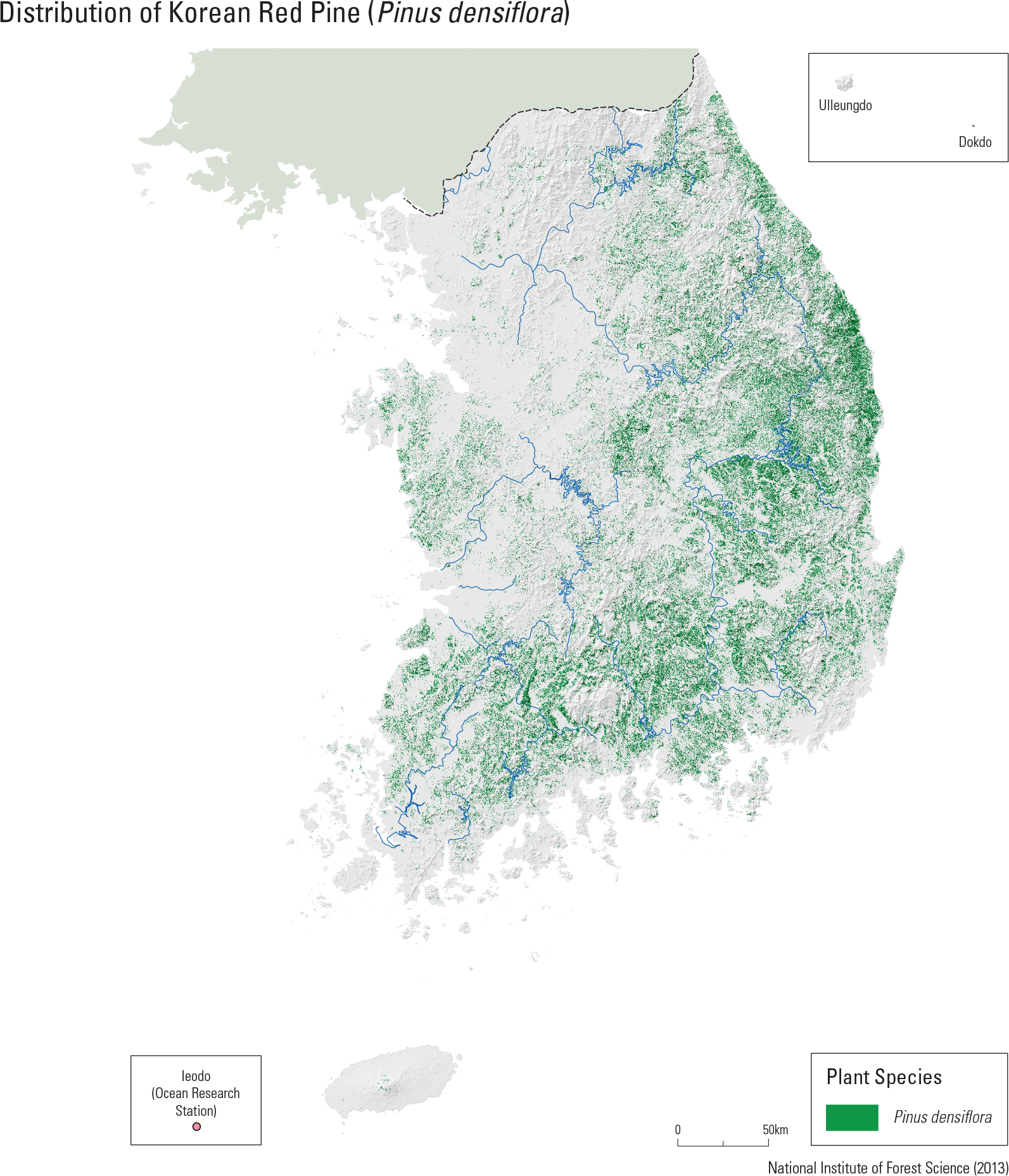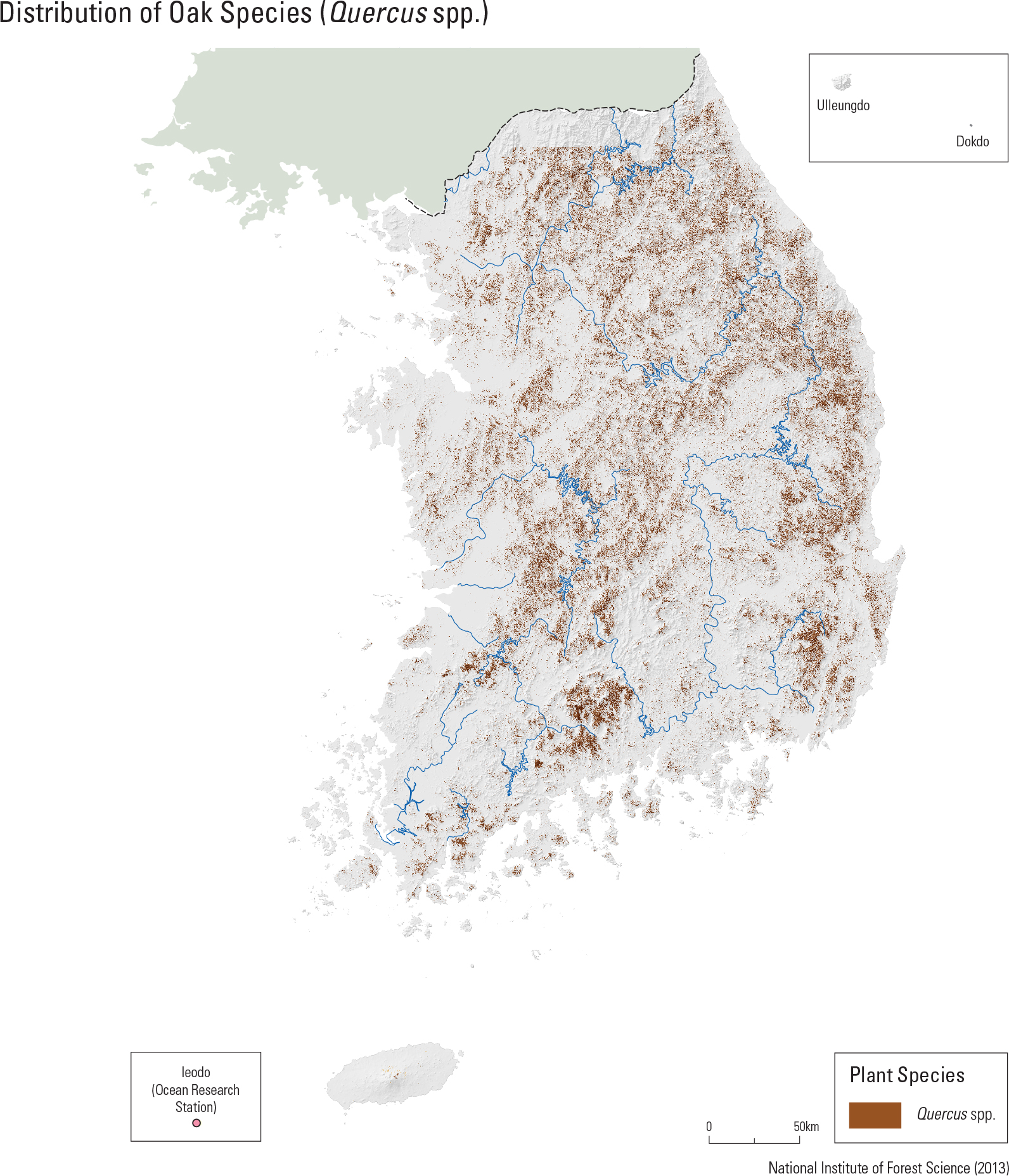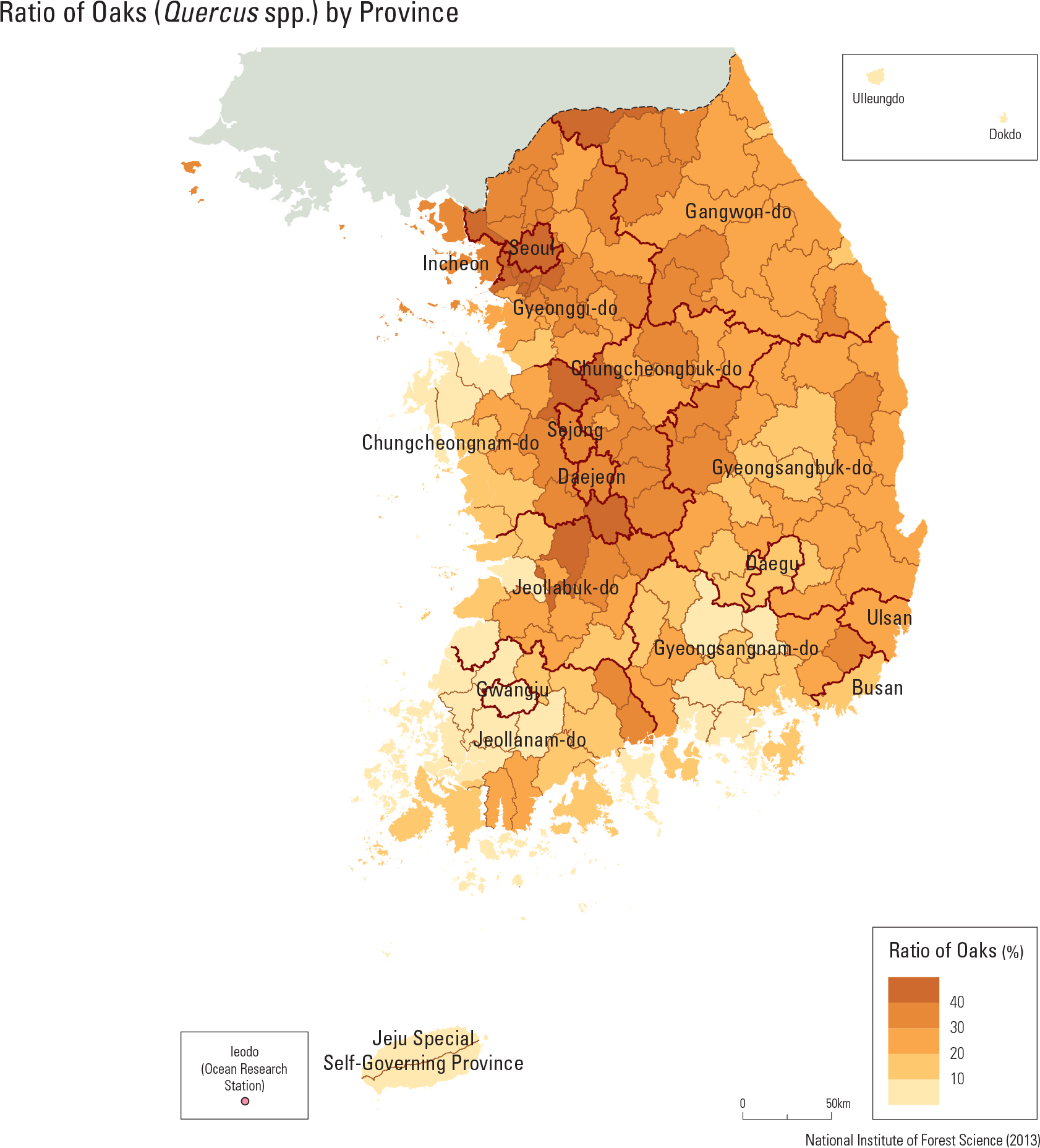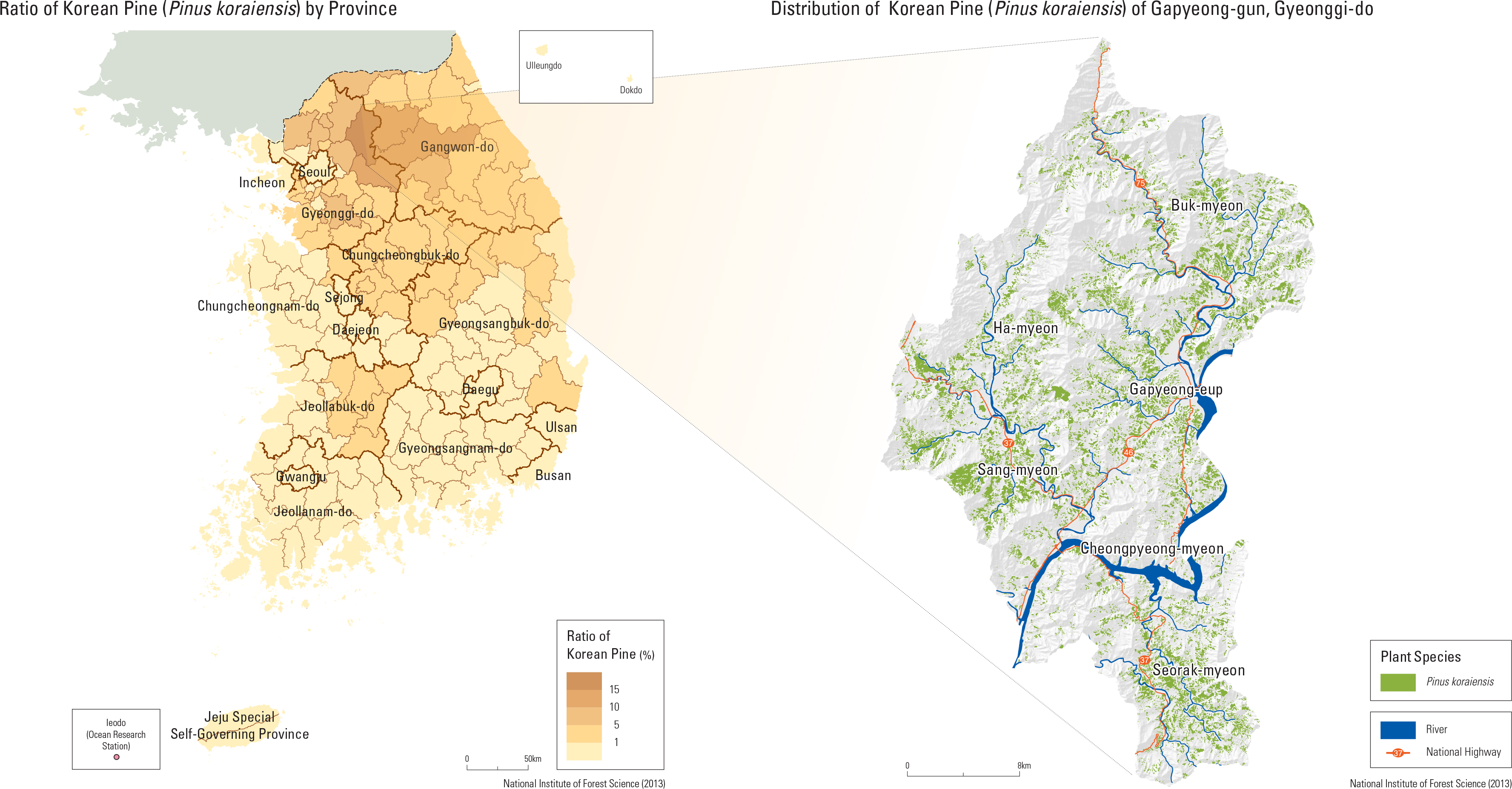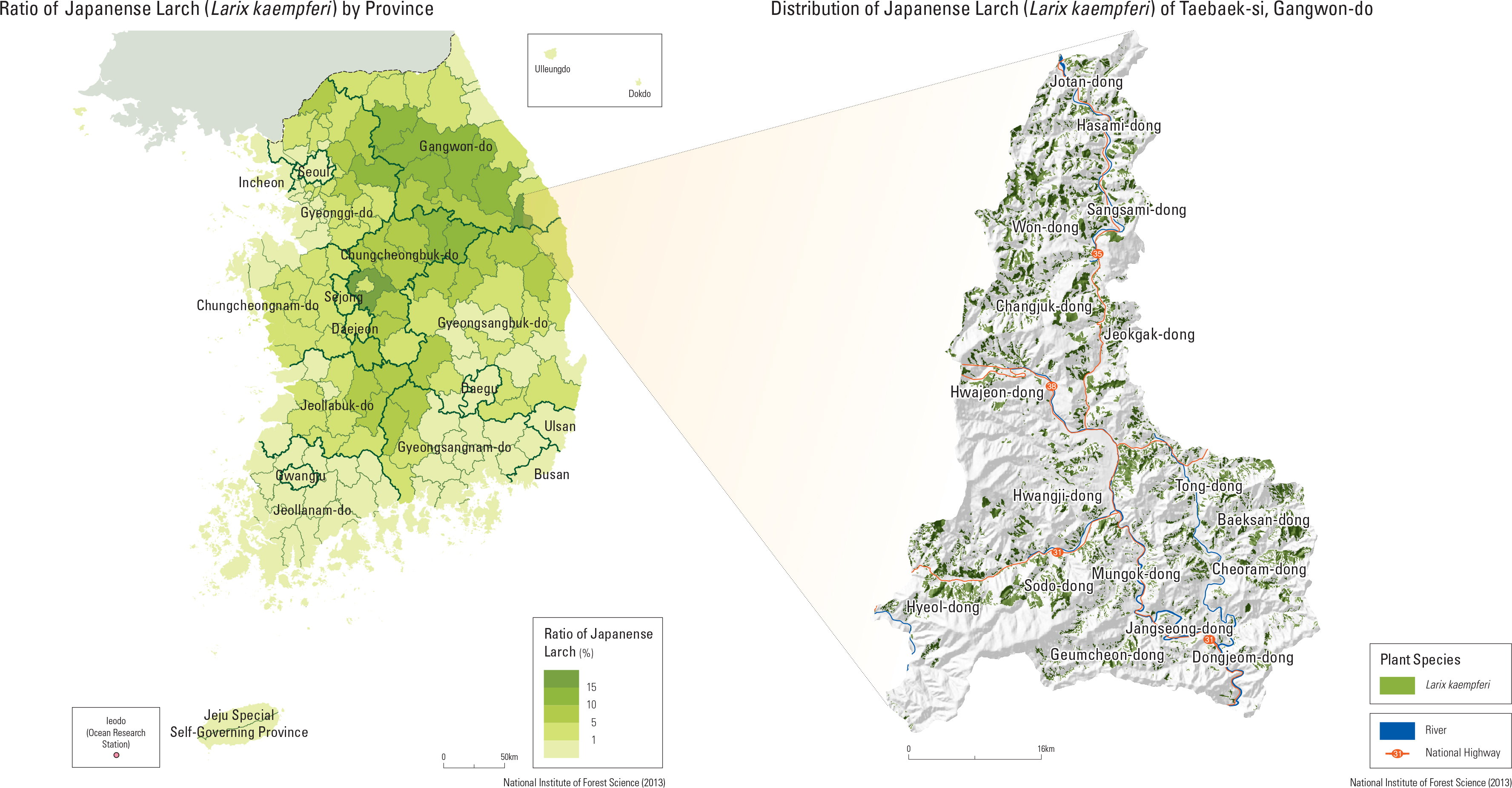English II
Forests cover 63.2% of the South Korean terri- tory. Loose- ower hornbeam (Carpinus laxi ora) forests are native to Korean forests but today, much of the native forest has been destroyed and replaced by oak species such as Mongolian oak (Quercus mongolica), sawtooth oak (Quercus acutissima), Oriental cork oak (Quercus varia- bilis), and Jolcham oak (Quercus serrata). Other species, including black locust (Robinia pseu- doacacia), East Asian alder (Alnus japonica), Sargent’s cherry (Prunus sargentii), and snowbell tree (Styrax japonicus) can be easily found in Korean forests. The largest forest consisting of one dominant species is of a representative conif- erous tree, the Korean red pine (Pinus densi ora). Known as the most favorite tree of Korea, the Korean red pine has been protected under govern- mental policy and lumbering has been prohibited. The Korean red pine (Pinus densiflora) ac- counts for 21.9% of the total forests in South Ko- rea. Although evenly distributed across the nation, they are mostly dominant in Gangwon-do and the eastern coasts of Gyeongsangbuk-do. In An- dong-si and Uljin-gun of Gyeongsangbuk-do, the proportion of Korean pine dominance is 49.9%. Changnyeong-gun of Gyeongsangnam-do shows the highest distribution rate of Korean red pine trees at 52.9% among all cities. Oak species are the major broadleaf tree species in South Korea, including Jolcham oak (Quercus serrata), Galcham oak (Quercus aliena), Oriental cork oak (Quercus variabilis), Mongolian oak
page_2 |
